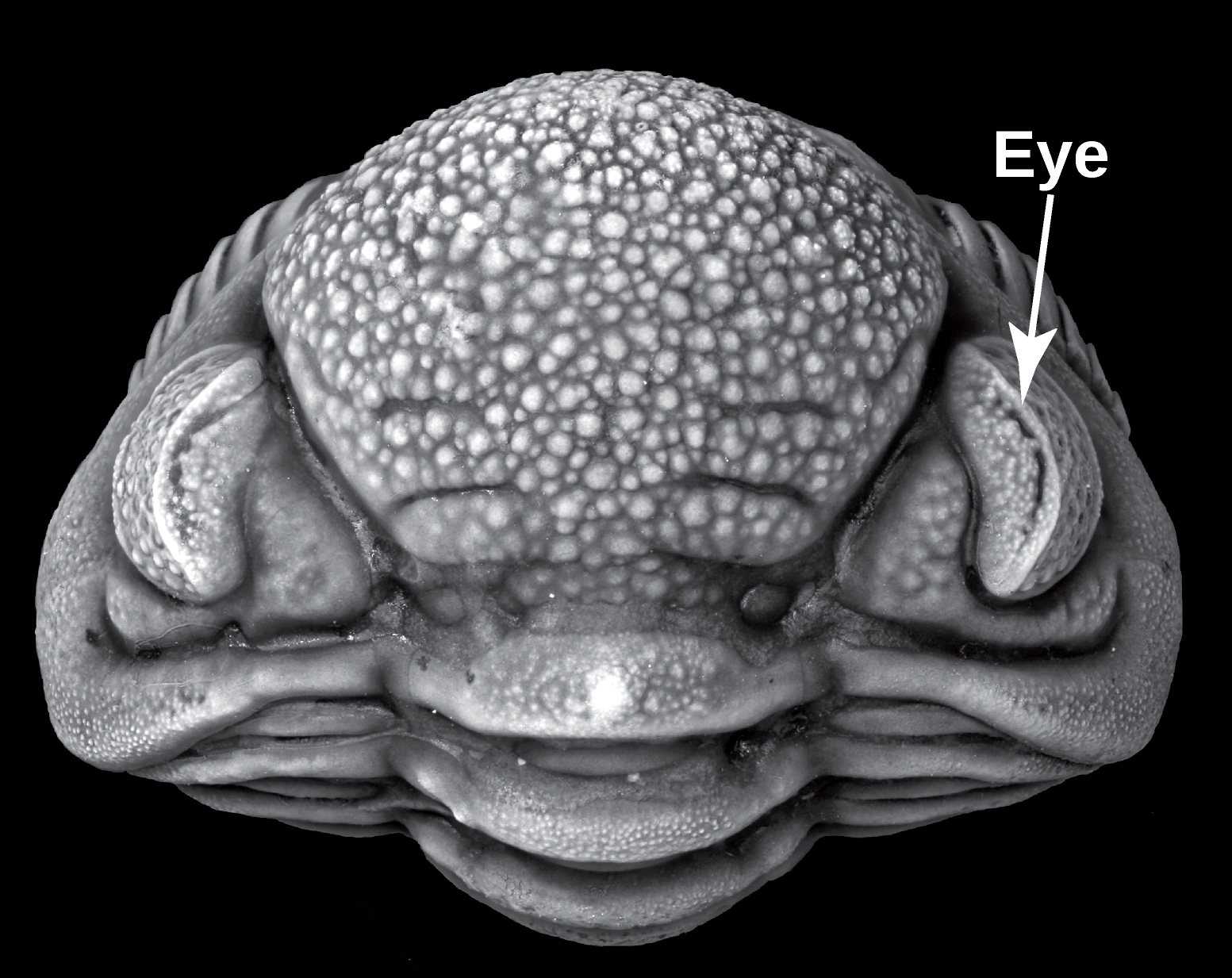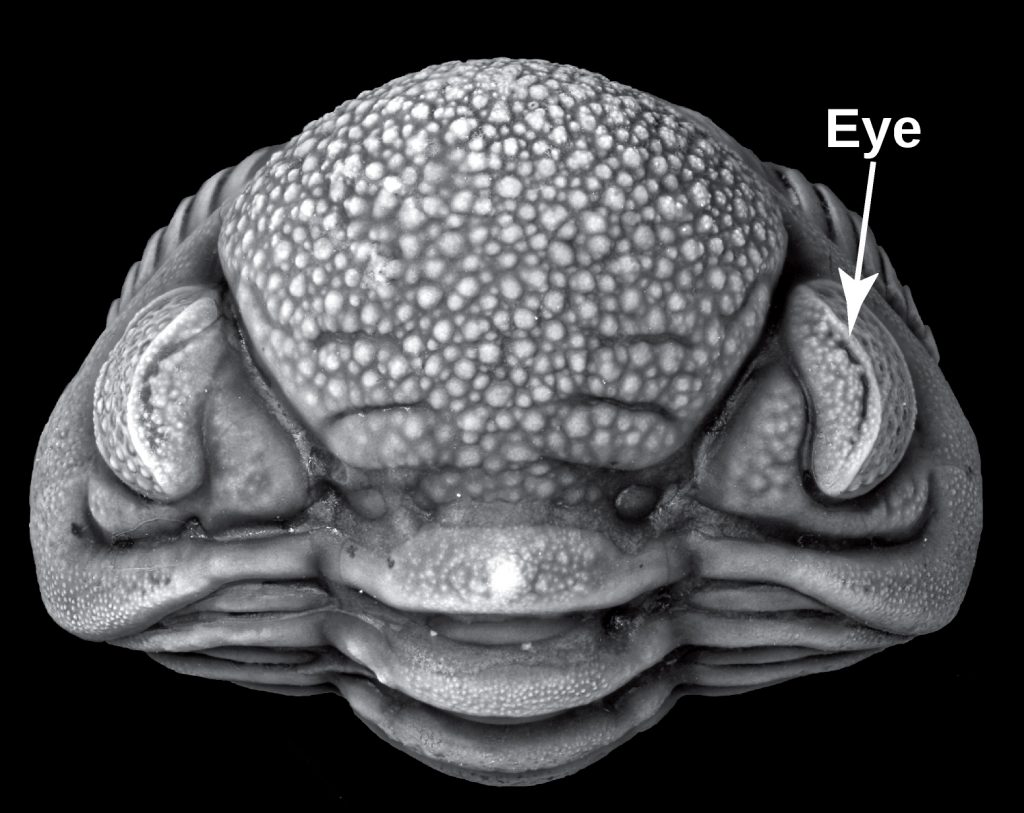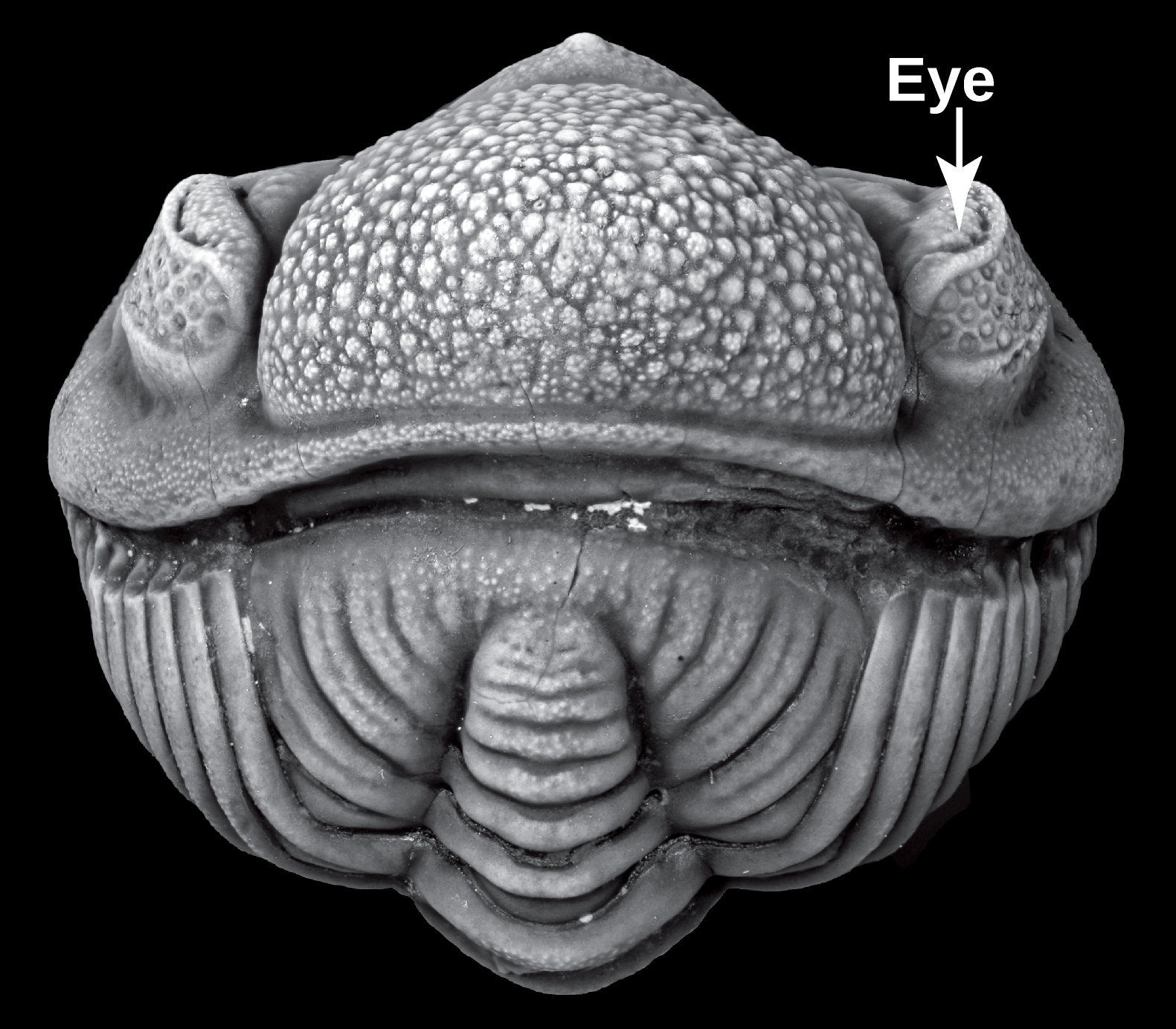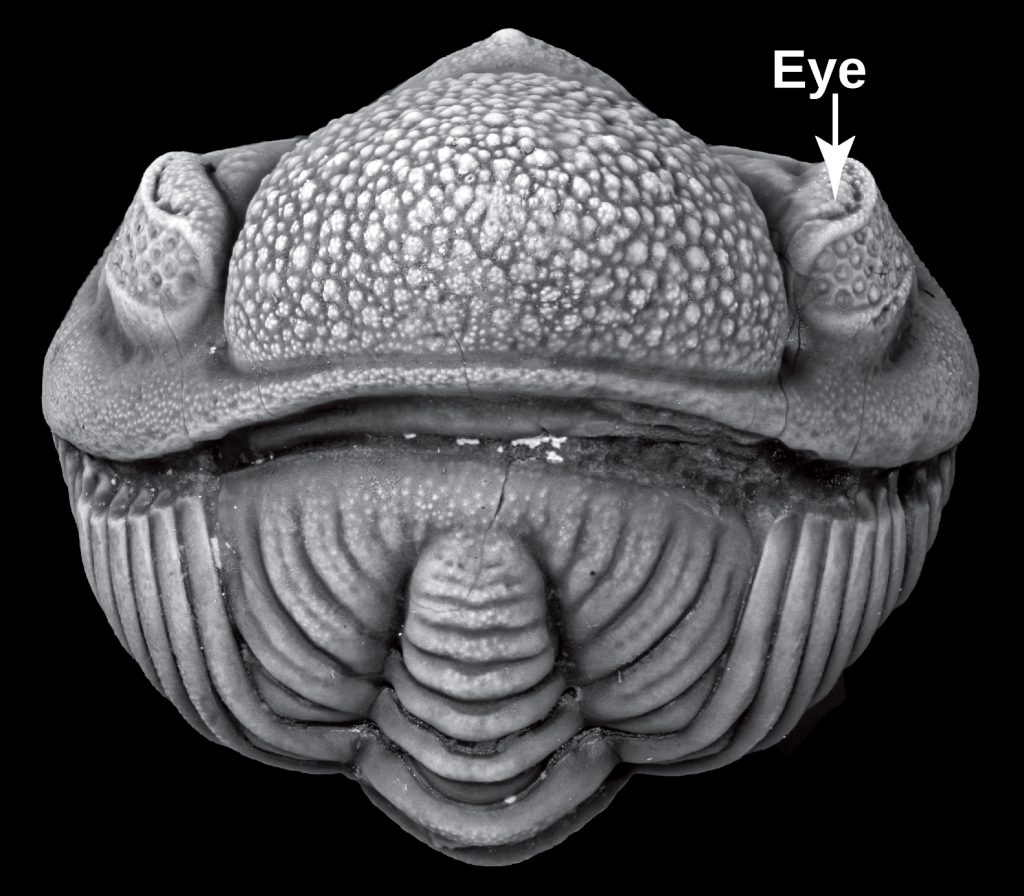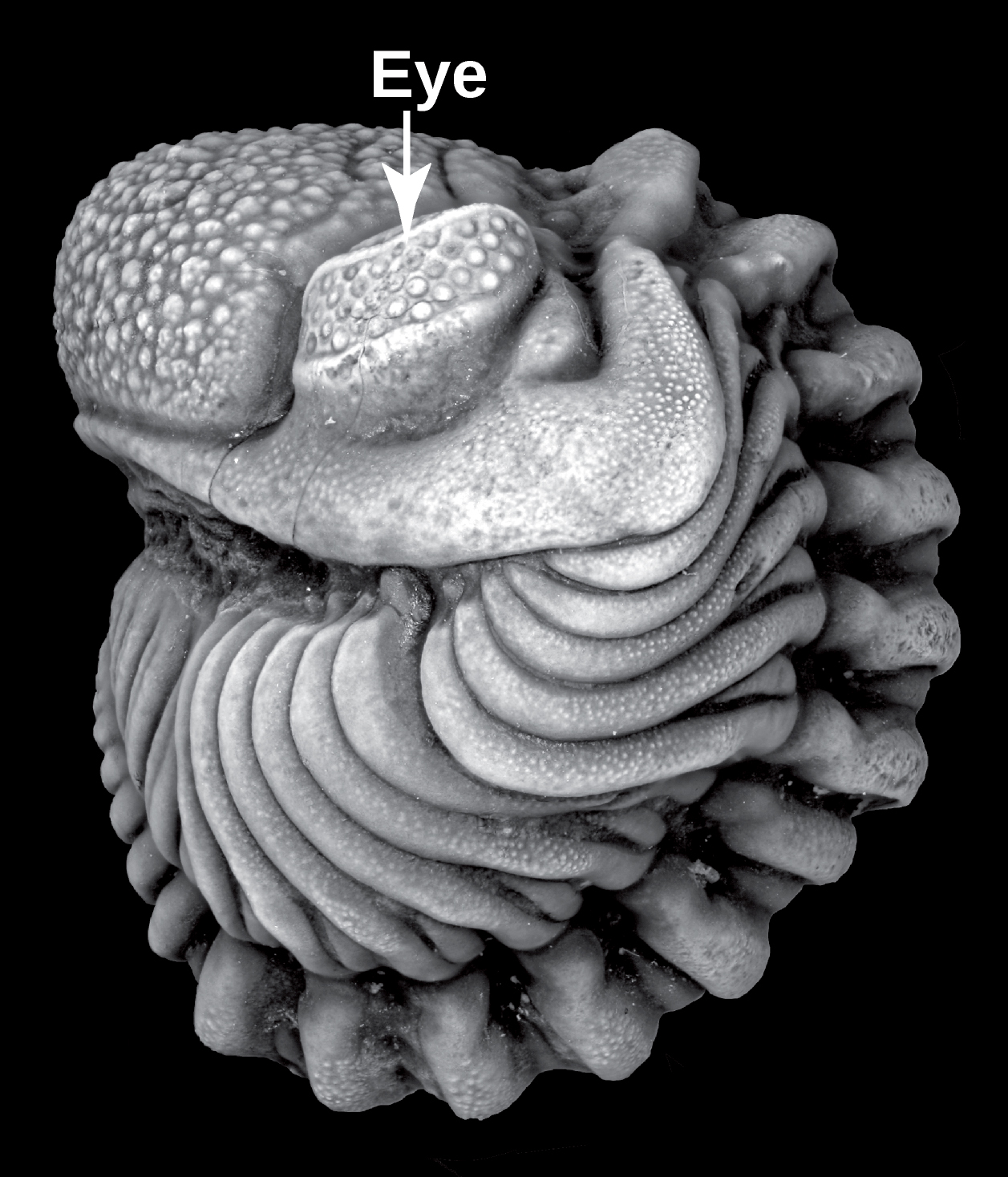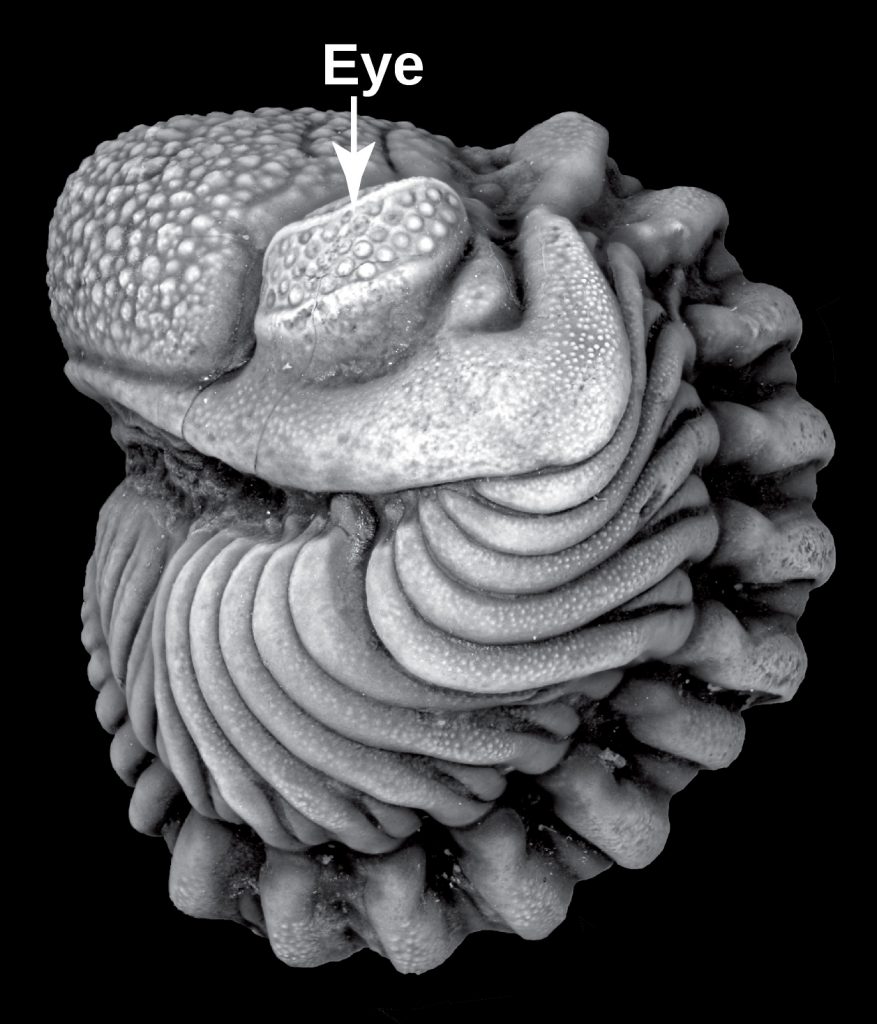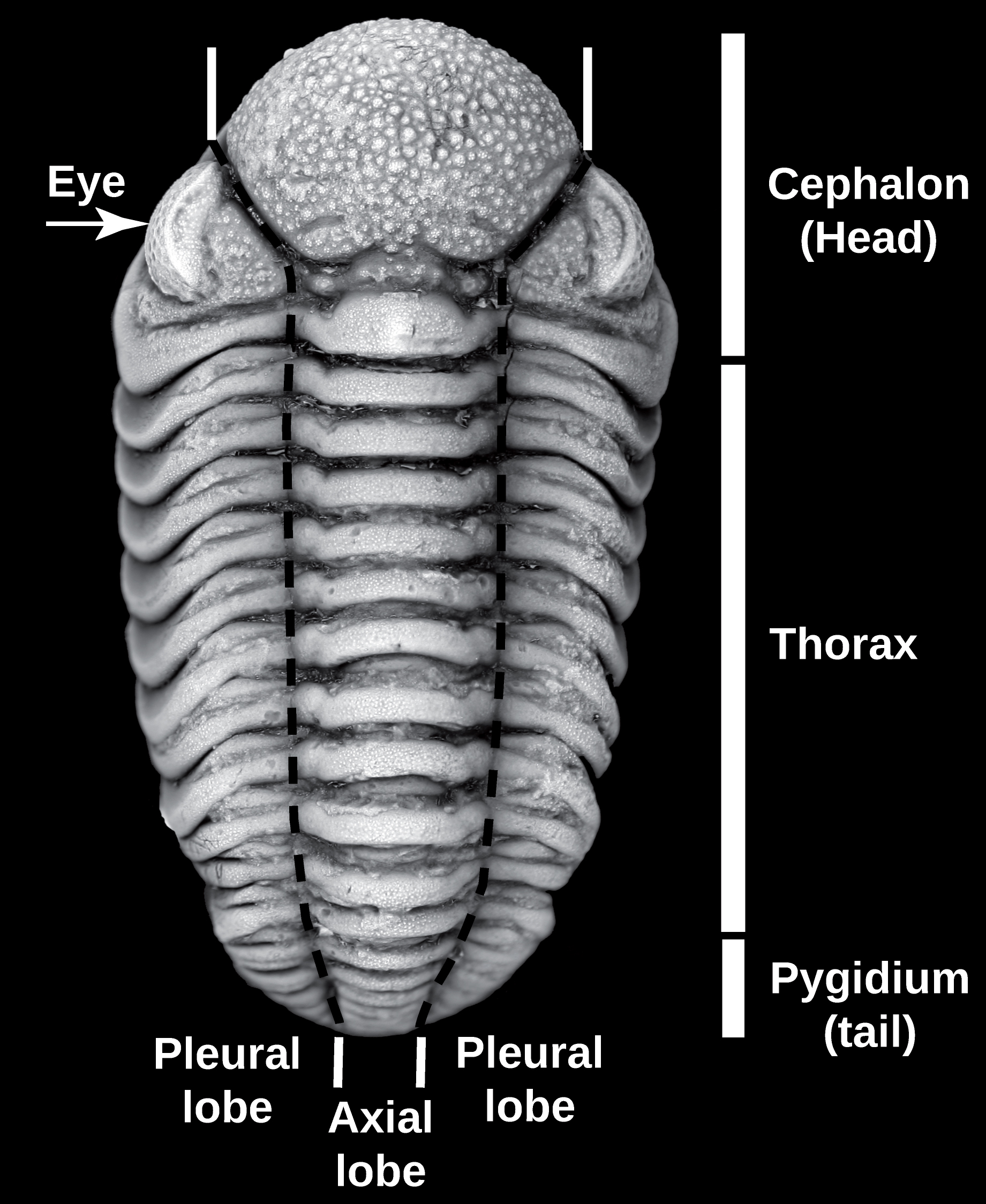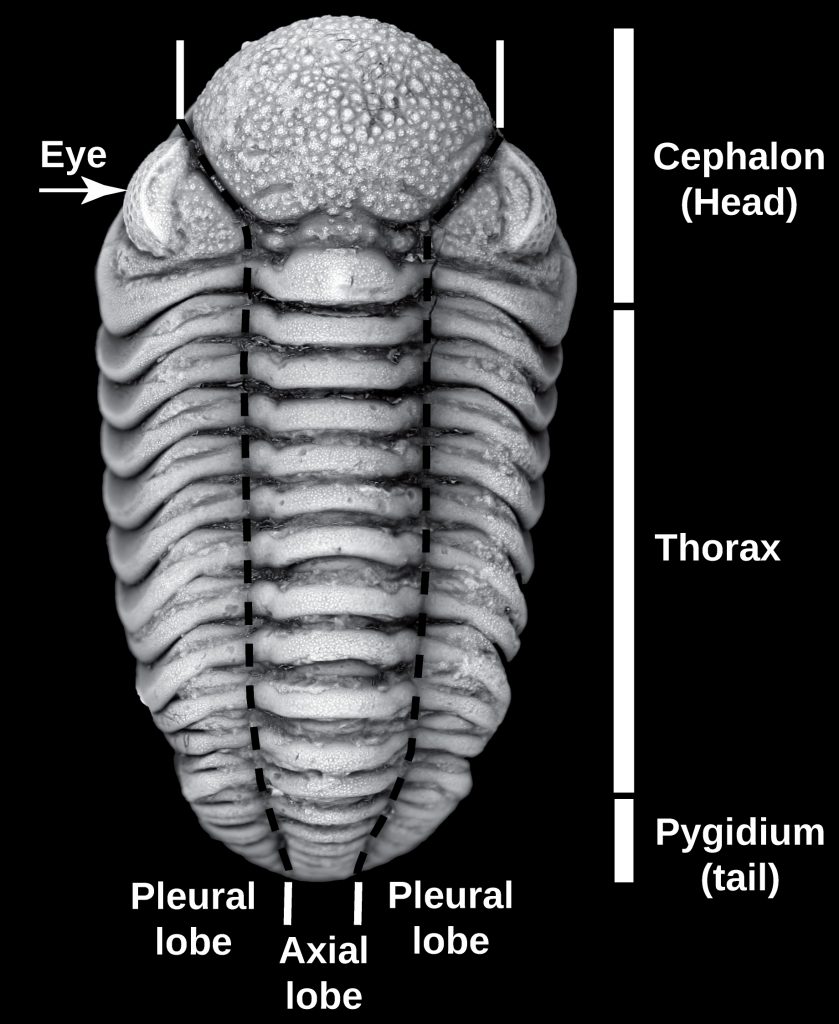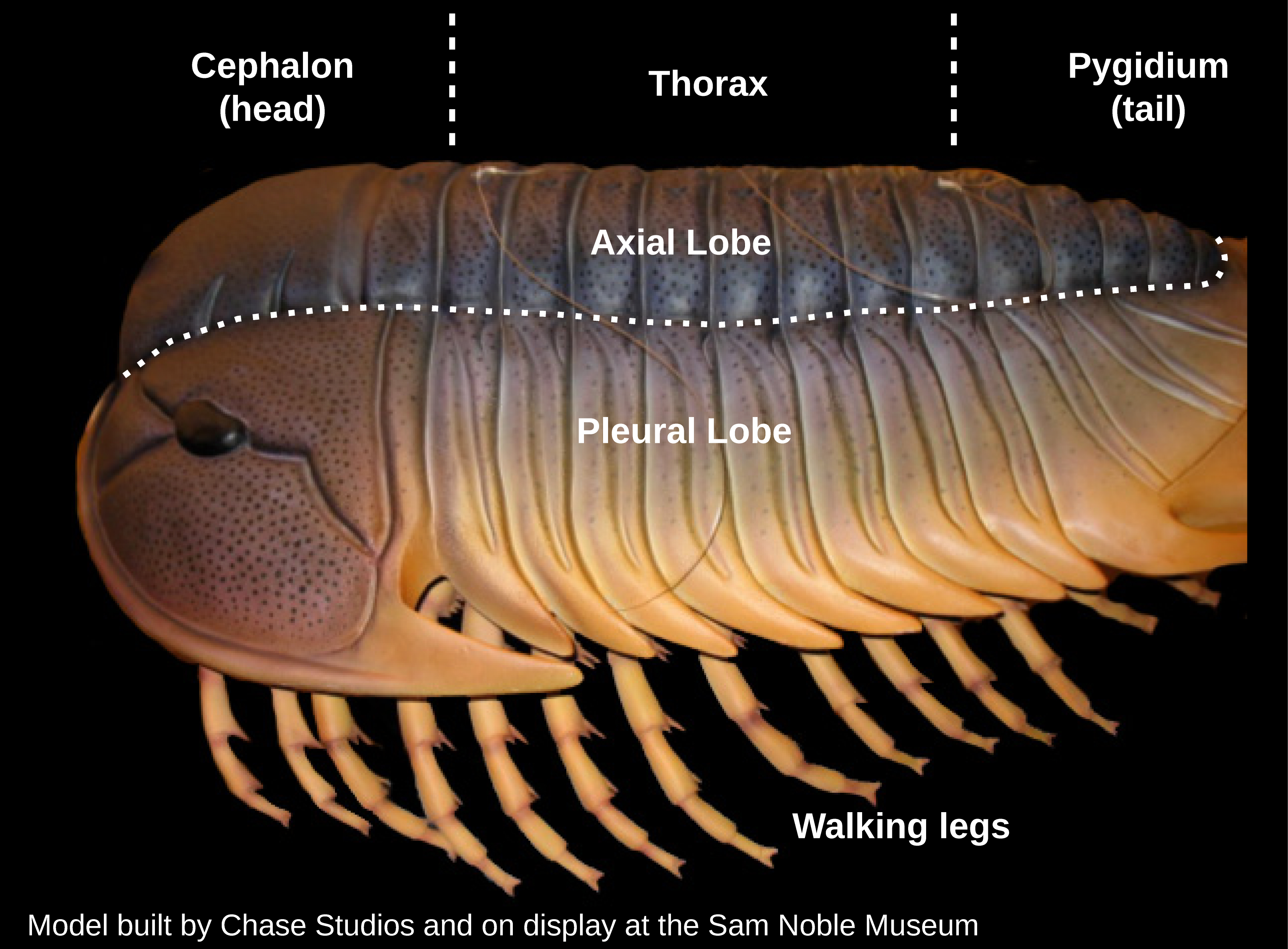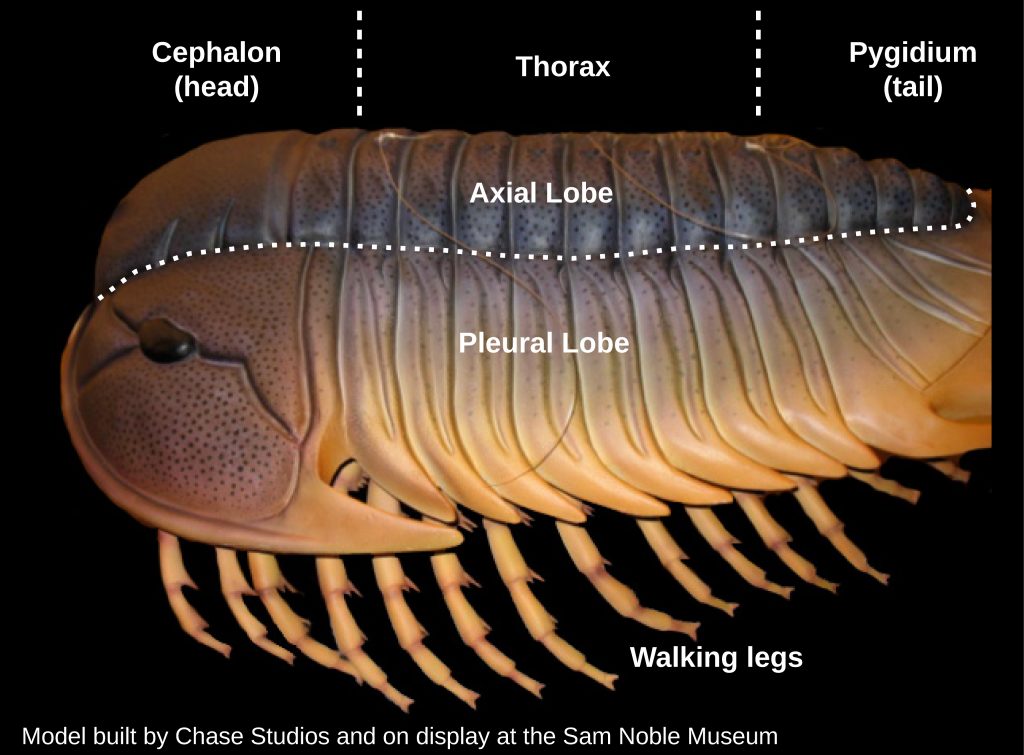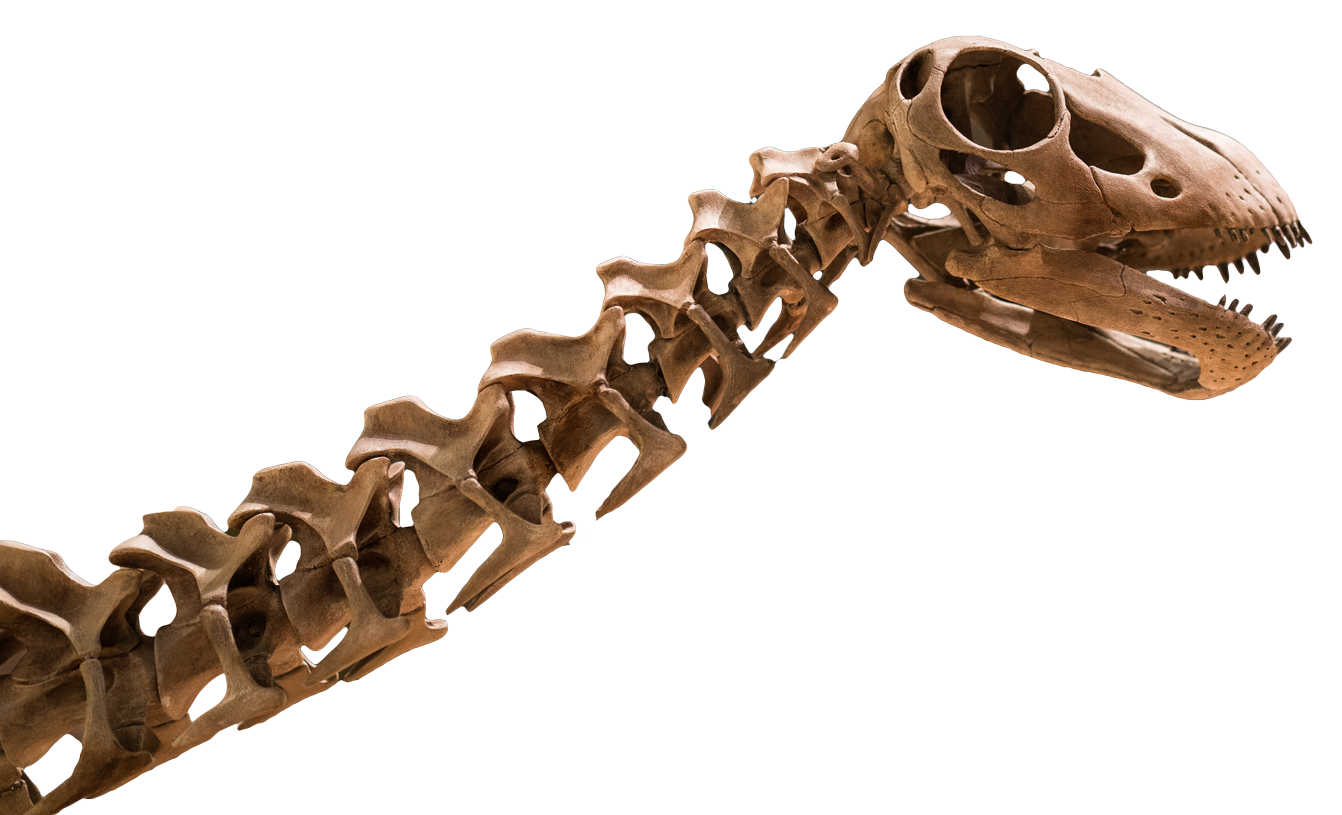Trilobites are extinct arthropods. Usually, only the skeleton is found as a fossil, and is rarely complete. The skeleton covered the upper side of the body and has a head (cephalon) and a tail (pygidium) separated by a flexible, jointed thorax. The skeleton is also divided length-wise into three lobes (giving trilobites their name, “three lobed animal”). The middle lobe (axial lobe) covered the mouth, stomach and gut. The other lobes (pleural lobes) covered the walking legs and gills.
Trilobites could roll up into a ball for protection by bending the thorax and bringing the tail underneath the head. Complete trilobite skeletons are relatively rare, and were probably preserved when the sea floor was buried by mud during major storms. Normally, the membranes that hold the skeleton together will decay and the skeleton will fall apart. The various pieces will be scattered by waves, currents or scavenging animals. This means that we usually find isolated parts of the head, tail and thorax.

Like all arthropods, trilobites grew by molting. The old skeleton was shed and replaced by a new one. Trilobites molted many times during their lives. There were often lines of weakness (suture lines) on the head, which split apart to help the animal emerge from the shell. The outer edges of the head (the free cheeks or librigenae) separated from the central region (cranidium).

Rare finds in which soft tissue is preserved show that the mouth and stomach of trilobites lay beneath the axial lobe of the head. The gut extends straight back to an anus located close to the end of the tail. Each segment of the body had a pair of simple, two-branched limb that were located beneath the pleural lobes. Each appendage consists of a jointed walking leg and a comb-like gill branch. The walking leg carried sharp spines would have been used to shred soft-bodied prey.
What did they eat?
Some trilobites may have eaten soft prey like worms. Others may have sifted tiny food particles from the mud on the sea floor.
Where did they live?
All trilobites lived in ocean waters. Most lived on or burrowed into the sand and mud on the sea floor, but some swam above the bottom.
When did they live?
Trilobites first appeared during the Cambrian Period (about 520 million years ago) and disappeared at a major extinction event at end of the Permian Period (about 250 million years ago).
Can I find them in Oklahoma?
Trilobites can be found in rocks of the Cambrian, Ordovician, Silurian, Devonian and Carboniferous periods. They are among the most common fossils in Cambrian and Ordovician rocks.

